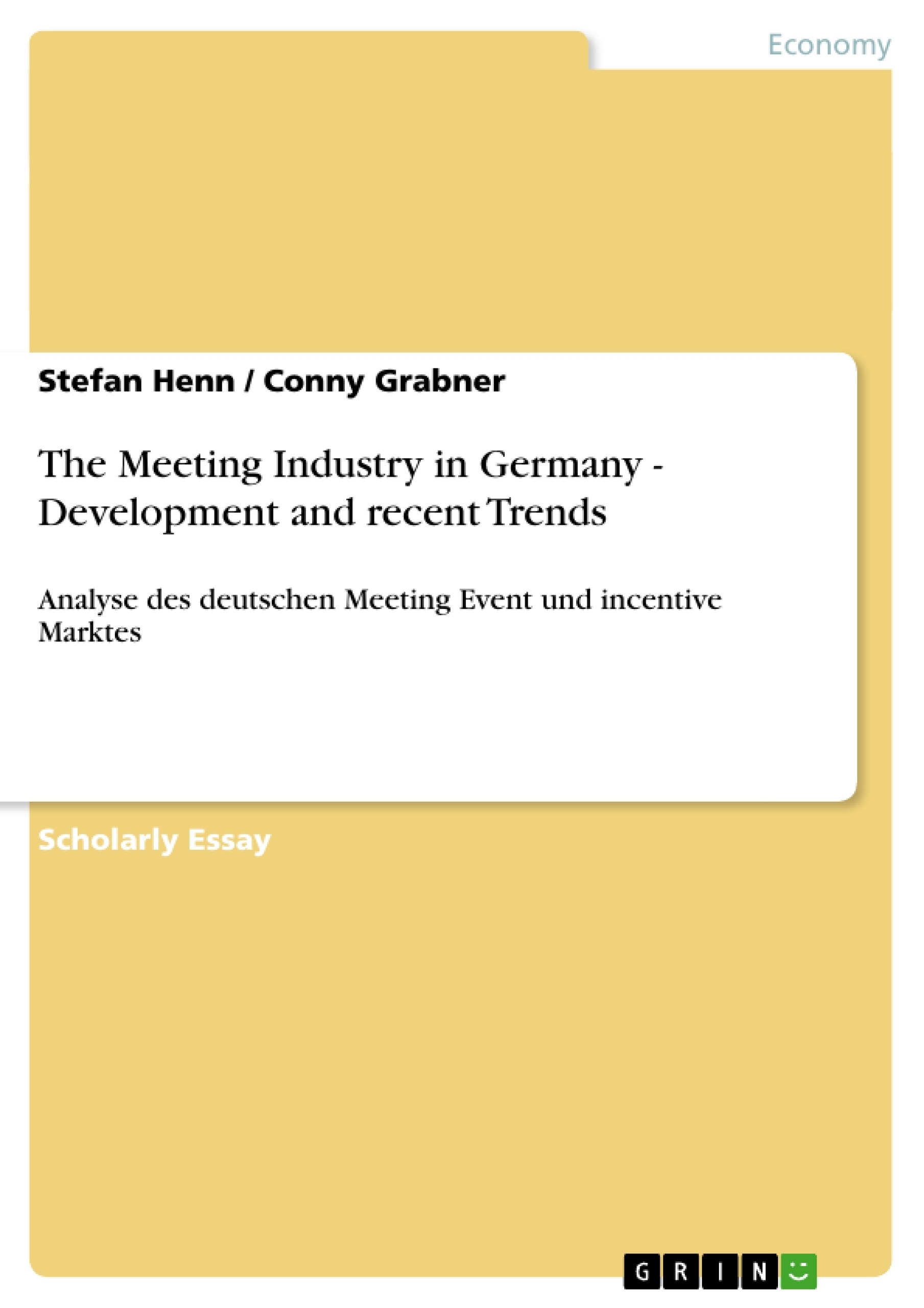To approach the MICE-industry in more detail every letter of the acronym MICE
is looked at individually. The intention is to provide key data that offers the possibility
for deduction as well as a comparison with other meeting international
destinations. All presented data are taken from the studies of AUMA, GCB Meeting
and Event Barometer, ghh consult, TNS Infratest GmbH and VDR Travel Report.
The statistical universe of each study is defined in Appendix B. The outcomes
predicate that there is a growing international participation in fairs and
trade Show. In the same way the strategic geographical position of Germany will
attract more businesses. It could be detected that despite the fact that companies
need meetings as mean to keep their employees informed, trained and motivated,
each event has to proof its effectiveness and efficiency.
Inhaltsverzeichnis (Table of Contents)
- Introduction
- Business Travel
- Corporate Travel
- Meetings
- Incentive Travel
- Exhibitions & Trade fairs
- Major Players
- SWOT -Analysis (Germany as meeting site)
- Conclusion/ Future Trends
Zielsetzung und Themenschwerpunkte (Objectives and Key Themes)
This paper analyzes the current state of the Meeting Industry (MICE) in Germany, examining its development and recent trends. By examining each letter of the MICE acronym individually, the paper provides key data to support deductions and comparisons with other international meeting destinations. The study utilizes data from various reputable sources, including AUMA, GCB Meeting and Event Barometer, ghh consult, TNS Infratest GmbH, and VDR Travel Report.
- Growth of international participation in fairs and trade shows
- Germany's strategic geographical position as an attractive meeting location
- Importance of meetings in employee training, information dissemination, and motivation
- Emphasis on effectiveness and efficiency for all events
- Analysis of the major players in the German MICE industry
Zusammenfassung der Kapitel (Chapter Summaries)
The paper begins with an introduction to the MICE industry in Germany. It then explores the various components of the industry, starting with business and corporate travel. This is followed by a detailed examination of meetings, incentive travel, and exhibitions & trade fairs. The paper continues by identifying key players in the German MICE market and conducting a SWOT analysis of Germany as a meeting site.
Schlüsselwörter (Keywords)
Meeting Industry, MICE, Germany, Development, Trends, Business Travel, Corporate Travel, Meetings, Incentive Travel, Exhibitions, Trade Fairs, SWOT Analysis, Major Players, International Destinations, Data Analysis, AUMA, GCB Meeting and Event Barometer, ghh consult, TNS Infratest GmbH, VDR Travel Report.
- Citar trabajo
- Stefan Henn (Autor), Conny Grabner (Autor), 2008, The Meeting Industry in Germany - Development and recent Trends, Múnich, GRIN Verlag, https://www.grin.com/document/122450



